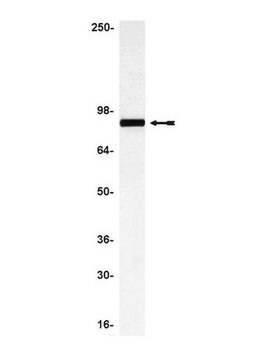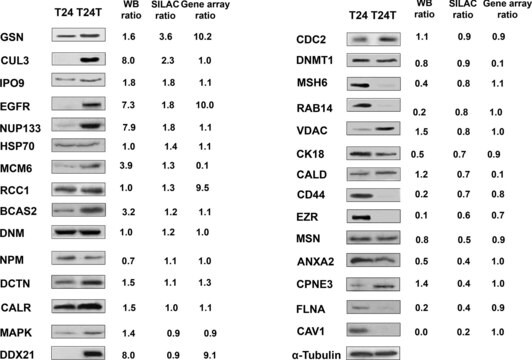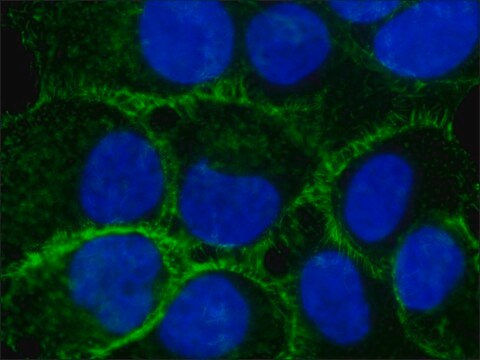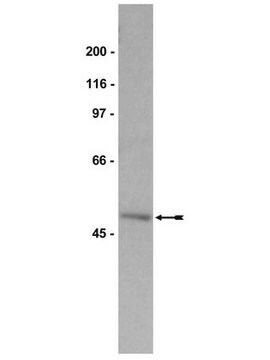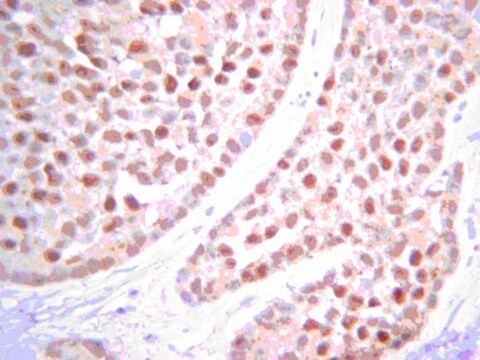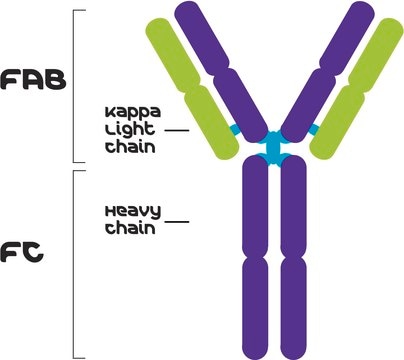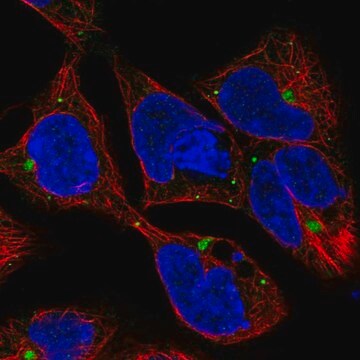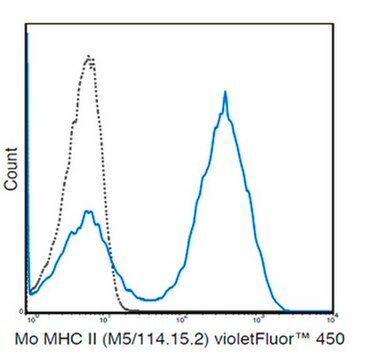MAB3822-C
Anti-Ezrin Antibody, clone 4A5, Ascites Free
clone 4A5, from mouse
Synonym(s):
Cytovillin, Villin-2, p81, Ezrin
About This Item
Recommended Products
biological source
mouse
Quality Level
antibody form
purified immunoglobulin
antibody product type
primary antibodies
clone
4A5, monoclonal
species reactivity
human, rat, rabbit, mouse
technique(s)
electron microscopy: suitable
immunocytochemistry: suitable
immunohistochemistry: suitable
immunoprecipitation (IP): suitable
western blot: suitable
isotype
IgG1κ
NCBI accession no.
UniProt accession no.
shipped in
wet ice
target post-translational modification
unmodified
Gene Information
human ... EZR(7430)
General description
Specificity
Immunogen
Application
Cell Structure
Adhesion (CAMs)
Immunohistochemistry Analysis: A representative lot detected a higher Ezin immunoreactivity in paraffin-embedded human medulloblastoma sections when compared with normal cerebellum sections (Haeberle, H., et al. (2012). Neoplasia. 14(7):666-669).
Immunohistochemistry Analysis: A representative lot immunostained parietal cells in rabbit gastric mucosa (Hanzel, D.K., et al. (1989). Am. J. Physiol. 256(6 Pt 1):G1082-G1089).
Immunoprecipitation Analysis: A representative lot immunoprecipitated Ezin from human A431 cells. The immunoprecipitated Ezrin was phosphorylated on Ser66 from dbcAMP‐treated, but not cAMP‐treated, A431 cells (Wang, S., et al. (2009). Cell Res. 19(12):1350-1362).
Electron Microscopy Analysis: A representative lot detected Ezrin on microvilli of the intracellular canaliculi (IC) and the subapical region of resting parietal cells in Lowicryl HM20-embedded rabbit gastric gland ultrathin sections (Sawaguchi, A., et al. (2004). J. Histochem. Cytochem. 52(1): 77–86).
Immunocytochemistry Analysis: A representative lot detected exogenously expressed human GST fusion protein by fluorescent immunocytochemistry staining of formaldehyde-fixed, Triton X-100-permeabilized rabbit gastric parietal cells (Zhou, R., et al. (2003). J. Biol. Chem. 278(37):35651-35659).
Western Blotting Analysis: A representative lot detected both the endogenous rabbit Ezrin as well as exogenously expressed human Ezrin GST fusion proteins in transfected rabbit gastric parietal cells (Zhou, R., et al. (2003). J. Biol. Chem. 278(37):35651-35659).
ELISA Analysis: Clone 4A5 hybridoma culture supernatant was screened for its immunoreactivity by ELISA and found to react with both dentured and non-denatured 80 kDa Ezrin preparations from rabbit gastric glands/mucosa vesicular fractions (Hanzel, D.K., et al. (1989). Am. J. Physiol. 256(6 Pt 1):G1082-G1089).
Quality
Western Blotting Analysis: 0.5 µg/mL of this antibody detected Ezrin in 10 µg of L6 rat myoblast lysate.
Target description
Physical form
Storage and Stability
Other Notes
Disclaimer
Not finding the right product?
Try our Product Selector Tool.
Storage Class Code
12 - Non Combustible Liquids
WGK
WGK 1
Flash Point(F)
Not applicable
Flash Point(C)
Not applicable
Certificates of Analysis (COA)
Search for Certificates of Analysis (COA) by entering the products Lot/Batch Number. Lot and Batch Numbers can be found on a product’s label following the words ‘Lot’ or ‘Batch’.
Already Own This Product?
Find documentation for the products that you have recently purchased in the Document Library.
Our team of scientists has experience in all areas of research including Life Science, Material Science, Chemical Synthesis, Chromatography, Analytical and many others.
Contact Technical Service